— The Data Center Revolution Driven by Liquid-Cooled Optical Interconnects
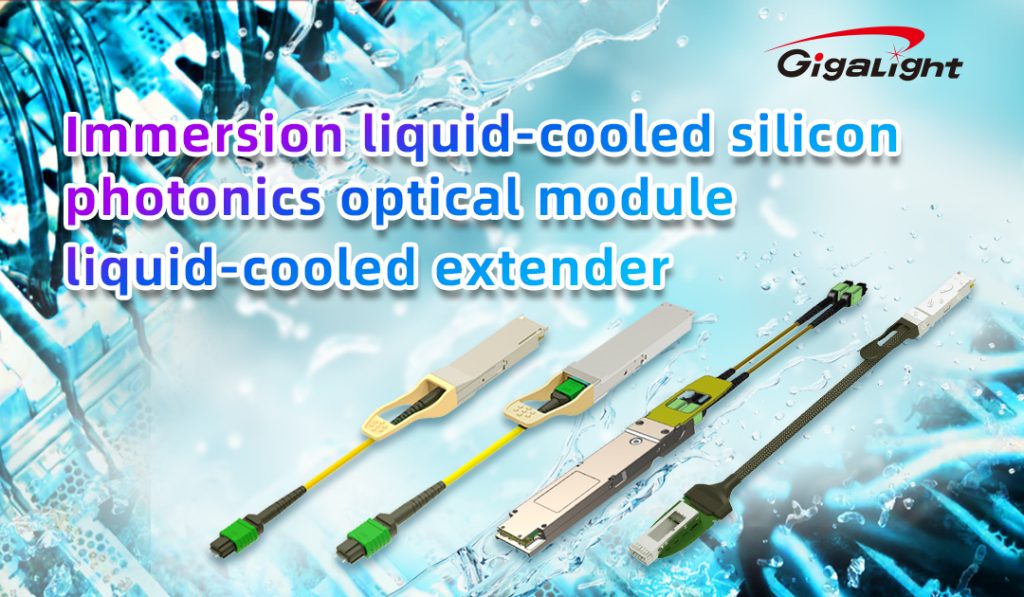
1. Research Background and Industry Trends
1.1 Thermal Challenges in Data Centers
With the rapid development of AI, HPC (High-Performance Computing), and 5G, the power density of data centers has increased dramatically. Traditional air-cooling solutions can no longer meet the thermal demands of high-performance chips such as GPUs, ASICs, and optical chips. According to IDC, the global liquid-cooled data center market will exceed USD 20 billion by 2027, with a compound annual growth rate (CAGR) of 25%.
1.2 Liquid Cooling Becomes Mainstream
Immersion Liquid Cooling: Direct-contact cooling with PUE as low as 1.02–1.05, suitable for ultra-high-density computing clusters.
Cold Plate Liquid Cooling: Suitable for partial retrofits, though less efficient than immersion cooling.
Silicon Photonics + Liquid Cooling: Silicon photonics (SiPh) reduces power consumption of optical modules. When combined with liquid cooling, it further improves energy efficiency.
As a leader in optical interconnect technology, Gigalight is pioneering immersion liquid-cooling extenders and silicon photonics liquid-cooled optical modules, driving data centers toward low-carbon and high-density development.
2. Technical Research & Analysis
2.1 Immersion Liquid-Cooling Extenders
Technical Highlights:
Product Design: Uses high-speed wire cores, supports extension up to 7 meters, continues our patented fish-shaped industrial design.
Module Compatibility: Supports multiple form factors such as QSFP28, QSFP-DD, OSFP, SFP112; compatible with 25G to 800G and future 1.6T optical modules, adaptable for various scenarios.
Thermal Management Optimization: Equipped with a 1.5W silent fan at the connector for enhanced heat dissipation.
Visual Monitoring Indicators: Designed for frequent hot-plugging at switch ports, helping extend port lifespan.
Gigalight Immersion Liquid-Cooling Extender Portfolio:
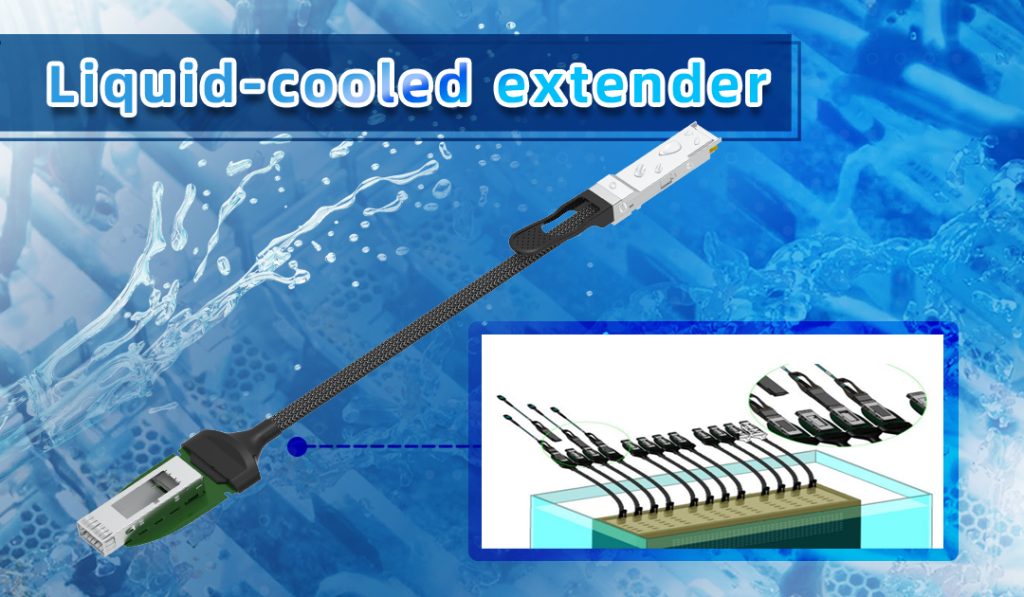
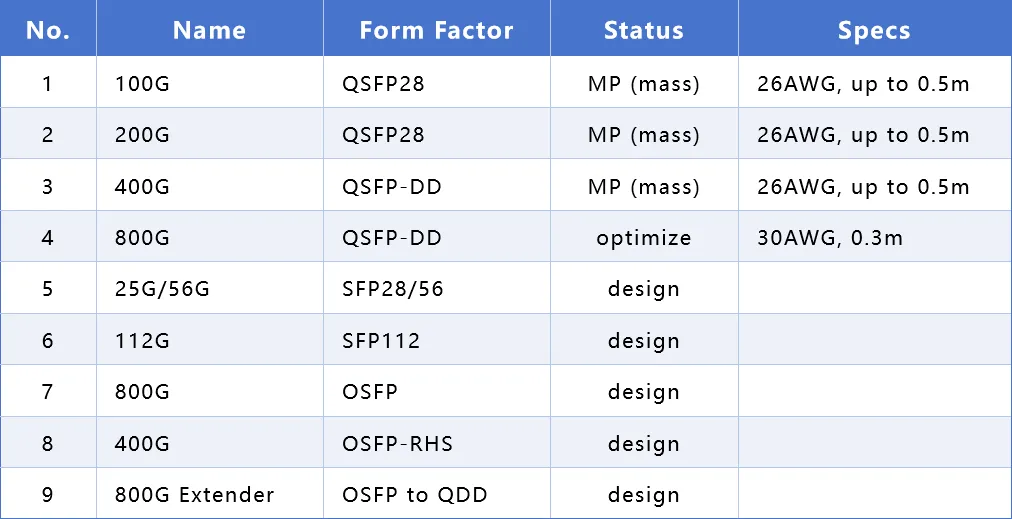
2.2 Silicon Photonics Liquid-Cooled Optical Modules
Technical Highlights:
Silicon Photonics Integration (SiPh): Offers high integration, low power consumption, lower cost, and high-speed transmission. Reduces module power consumption by 30%, supporting 400G/800G and future 1.6T speeds.
Packaging Design: Unique hermetically sealed housing with pressure resistance >0.2Mpa. The enclosure uses high thermal conductivity materials for 50% improved cooling efficiency in liquid environments. Includes a dedicated seal-check valve to ensure sealing quality.
Compatibility: Supports QSFP112, QSFP-DD, OSFP, OSFP-RHS and is ready for 100G–800G and future 1.6T modules.
CPO (Co-Packaged Optics) Compatible: Offers ultra-low power options for next-gen 51.2T switches.
Coolant Types Supported: Fluorinated liquid, mineral oil, silicone oil, etc.
Gigalight Silicon Photonics Liquid-Cooled Optical Module Portfolio:
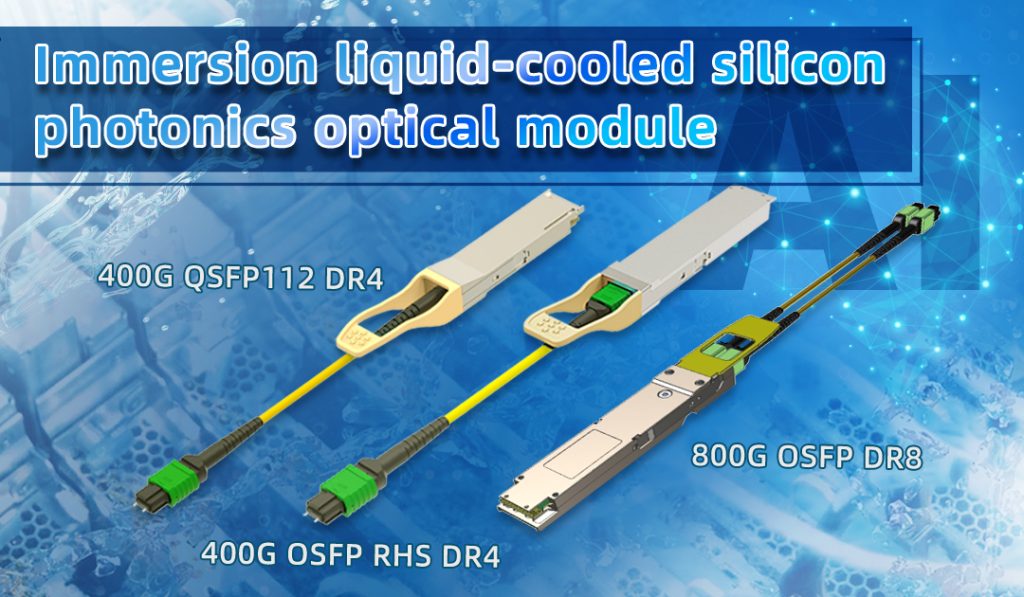
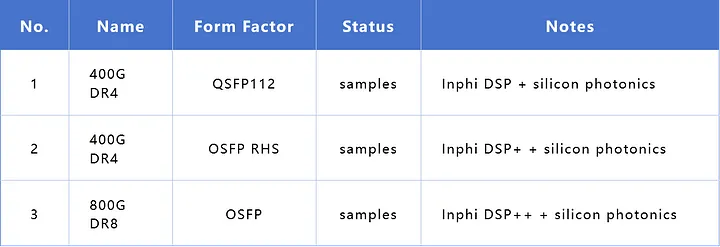
3. Market Applications & Competitive Advantages
3.1 Target Markets
Supercomputing Centers: Demand ultra-high-density liquid cooling for GPU/CPU clusters.
Cloud Giants: Companies like Google, AWS, and Alibaba Cloud are building liquid-cooled data centers.
Edge Computing: High-power edge servers require compact liquid-cooled optical interconnects.
3.2 Competitive Advantages
Full-Stack Liquid-Cooled Interconnect Solutions: End-to-end support from optical modules to liquid-cooling extenders.
Silicon Photonics + Liquid Cooling: Dual-power reduction results in up to 40% overall energy efficiency improvement.
Open Ecosystem Collaboration: Joint solution development with chipmakers and liquid-cooling system vendors.
4. Future Outlook
1.6T Liquid-Cooled Optical Modules: Expected commercialization by 2026, enabling next-gen AI clusters.
Widespread CPO Deployment: Liquid cooling will be essential for the adoption of co-packaged optics.
Standardization Progress: Industry-wide standards for liquid-cooled optical interconnects will accelerate adoption.
5. Conclusion
Gigalight’s immersion liquid-cooling extenders and silicon photonics liquid-cooled optical modules represent the future of optical interconnects in data centers. These innovations not only solve the thermal bottleneck of high-performance computing, but also advance the industry’s move toward low-carbon and high-density infrastructure. With the exponential growth in AI computing demands, the liquid-cooled optical interconnect market is poised for rapid expansion — and Gigalightis well-positioned to become a key industry supplier.
